TechRadar Verdict
Pros
- +
Low price for featureset
- +
High Guide Numer of 60
- +
Good level of adjustment
Cons
- -
LCD screen can be slow to respond
- -
Build quality not as good as the competition
- -
ISO and aperture need to be manually set in some modes
- -
Loud zoom motor
Why you can trust TechRadar
The Nissin Di866 was launched as direct competition to the Canon 580 EX II and Nikon SB 900, albeit for a price of £190, over £100 less than its competitors.
A quick check through the specifications makes the Di866 seem very tempting, with impressive features including a GN of 60 (ISO 100 at 105mm), 2 greater than either the Canon 580 EX II or Nikon SB 900, and compatibility with Canon's ETTL II or Nikon's iTTL systems, depending on fit.
It also includes a Metz style secondary sub flash and a host of other great features.
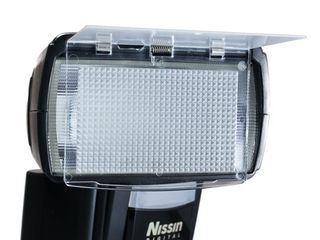
Build and Handling
A side-by-side comparison instantly shows the differences between the Di866 and Canon Speedlite 580 EX II with a lack of buttons to change modes and settings across the back. Instead Nissin has chosen an LCD interface to navigate through mode selections and adjustments.
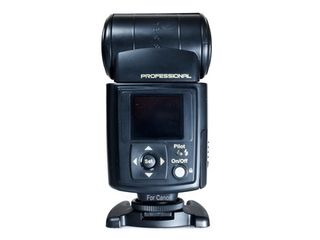
Whie the build quality is good, the Nissin flash doesn't have the robust feel and quality finish of the 580 EX II or SB 900, but does feel suitably robust to live up to professional use.
In use, selecting modes is straight forward using the multi function button. Although clicking around the screens to select modes or make adjustments is easy, there is a short but noticeable lag between each click.
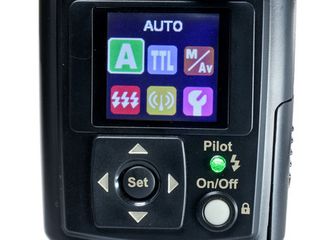
A nice feature of this interface is that the orientation of the display flips depending on the whether the flash is vertical or horizontal, with the four way control, multi function button (around the set button) mirroring the change.
There is also a sub flash mounted on the front of the unit which supplies a handy fill-in flash when bouncing the light, helpful when taking portraits. If you have no need of the extra light then it can be switch off through the advanced menu.
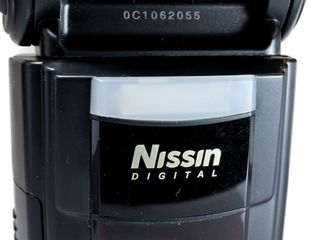
The head can be tilted up through 90 degrees, to the left by 90 degrees and to the right by 180 degrees, giving a good amount of flexibility when it comes to directing the light.

Performance
With four fully charged AA sized Eneloop batteries the flash takes about 6 seconds to recharge after each full power shot, which is just slower than it's rivals.
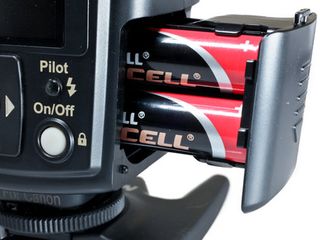
At more standard power ratings the recharge time is dramatically reduced with flash ready almost instantly at 1/8 for portraits shots of up to 2.7mm (9 ft) distance.
In Auto mode the Di866 offers fully auto TTL (through the lens) metered lighting with no manual adjustment. There's more flexibility in TTL mode with –3 to +3EV adjustment in steps of 1/3 EV. These adjustments are made using the multi control pad.
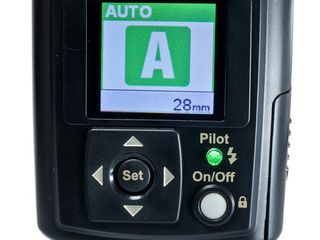
Further adjustment can be made by holding down the Set button for 2 seconds to access the advanced menu. From here you can switch on or off the sub flash, and manually set the head's zoom.
In TTL mode, as in Auto, the ISO and aperture setting information is gathered from the camera.
More advanced shooters may like to use the Manual and Aperture priority (Av) modes, which share the same menu icon.
In Manual mode the power can be set from 1/1 to 1/128, and again holding down the Set button will take you through to the advanced menu where the ISO and Aperture can be set.It is also possible to set the flashgun to work as a slve unit in Maanual mode.
In Slave Digital (SD) mode the Di866 ignores any pre-flash and only fires when the master flash unit fires. While in Slave Film (SF) mode the flash fires with the first flash and is designed for more traditional camera and flash systems without a pre-flash.
Aperture priority (Av) mode enables you to set the aperture, but as with Manual mode the sensitivity (ISO) needs to be set manually.
Multi mode is the option to go for if you need to fire the flash several times during a single exposure. It enables some creative effects, for example, generating a multiple exposure of a moving subject with a single shot.
The final mode available is Wireless, with two options Master or Remote. With Master selected, you can control a further three flashguns, whilst the Remote option sets the flash to act as a slave.
In both wireless modes the channel can be set to help avoid interference with other flashguns. There are a series of sockets on the side of the Di866 flashgun to enable PC sync (ie camera) and battery pack connection.
There's also a USB port to allow the flashgun to be connected to the computer so that the firmware can be updated. This means that the flash can be kept up to date with the latest cameras and new feaures or bug fixes can be added if necessary.
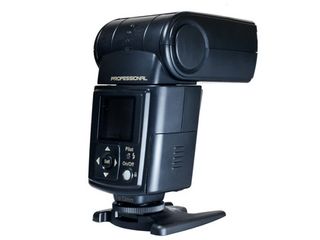
Verdict
The Nissin Di866 doesn't have the finish of the Canon Speelite 580 EX II or Nikon Speedlight SB 900, but then this reduction in quality is more than made up for in the price.
In use, the flash handles well and produces a good even light. With features such as the sub flash, rotating LCD image and wireless control the user experience is improved over both the 580 EX II and SB900.
Where this flash is let down is the time it takes to recharge after each full power shot and the slight lag between menu screen changes and settings adjustments.
In all, the Di 866 is a powerful and well-featured flashgun and a good alternative to the more expensive Canon and Nikon models.
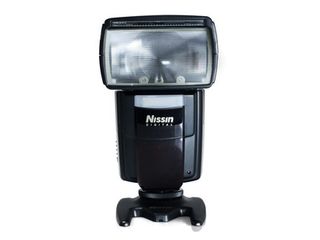
Bad points
LCD screen can be slow
Build quality
ISO and aperture need to be manually set in some modes
Score 4/5
Ali Jennings is the imaging lab manager for Future Publishing's Photography portfolio. Using Imatest Master and DxO Analyser he produces the image quality tests for all new cameras and lenses review in TechRadar's cameras channel. Ali has been shooting digital since the early nineties and joined Future's Photography portfolio back in 2003.

